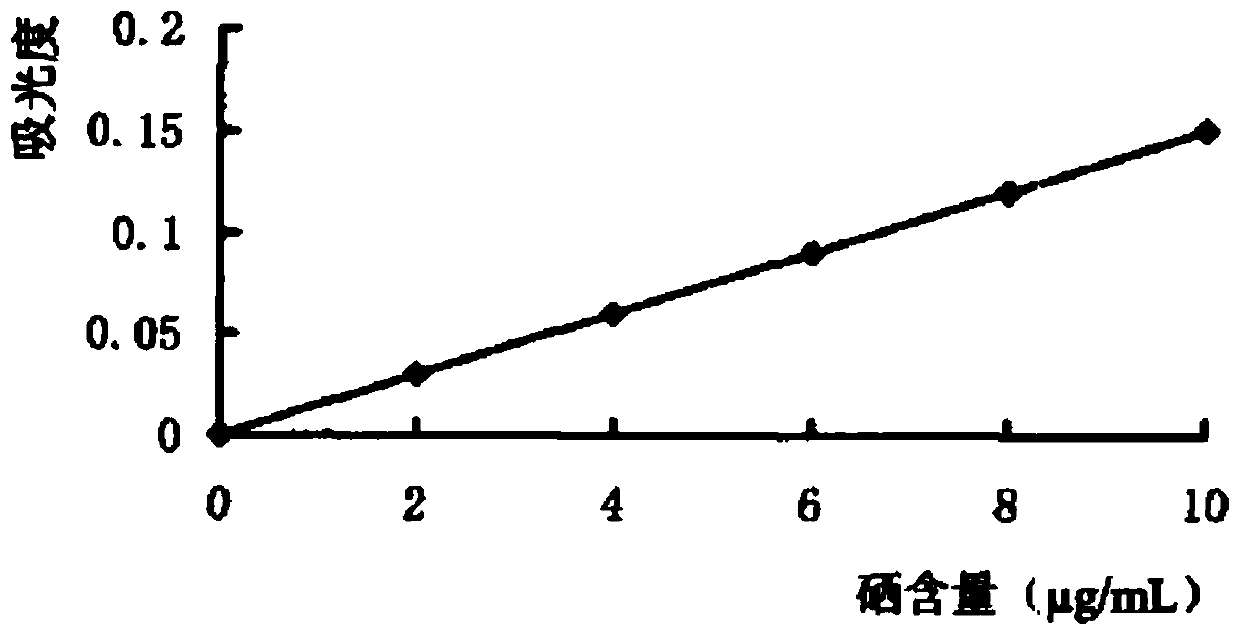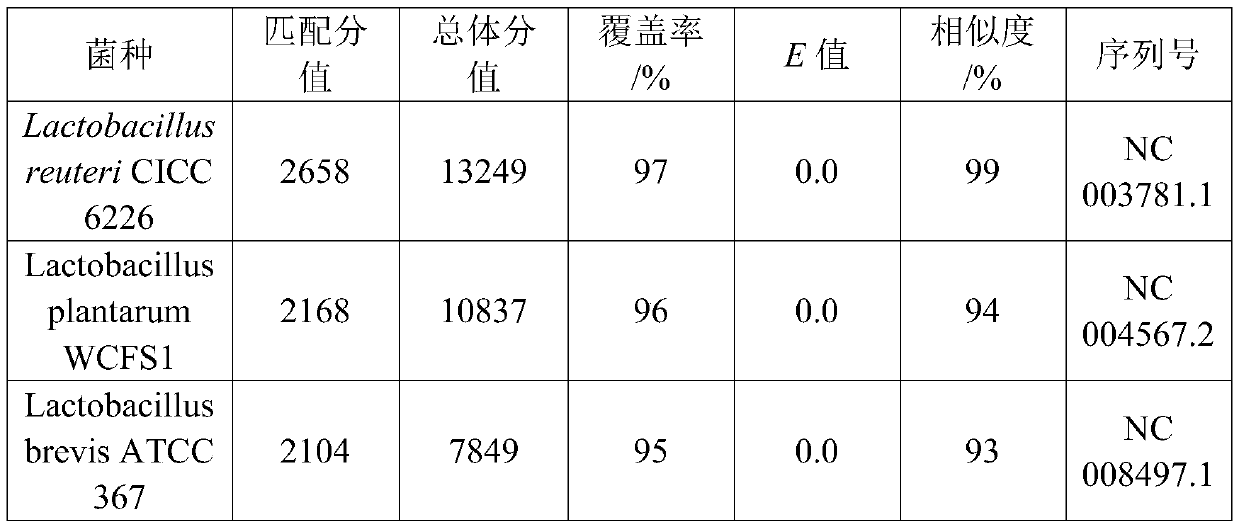Lactobacillus reuteri and application thereof to production of selenium-enriched eggs
A technology of Lactobacillus reuteri and selenium-enriched Lactobacillus reuteri, which is applied in the field of lactic acid bacteria, can solve the problems that the safety of selenium-enriched eggs cannot be guaranteed, the content of selenium element is not high, the tolerance of poultry is low, and the like. The effect of improving quality and flavor, enriching nutrients, increasing selenium and protein content
- Summary
- Abstract
- Description
- Claims
- Application Information
AI Technical Summary
Problems solved by technology
Method used
Image
Examples
Embodiment 1
[0030] 16S rDNA analysis results of bacterial strains of the present invention
[0031] Extract the DNA of the bacterial strain using the bacterial genomic DNA extraction kit (spin column type); add 9.5 μL of ultrapure water, 12.5 μL of 2×PCR Master Mix, 1 μL of upstream and downstream primers, and 1 μL of DNA template into a sterile EP tube. After instant centrifugation, place in a fluorescent quantitative PCR instrument and amplify in the following PCR amplification conditions: 94°C pre-denaturation for 5 minutes, one cycle; 94°C denaturation for 1 minute, 65°C renaturation for 1 minute, 72°C extension for 20 seconds, and 30 cycles After that, continue to extend at 72°C for 10 minutes, one cycle; the amplified DNA was electrophoresed on a 1% agarose gel plate at 80V for 50 minutes, and then gel imaged; the DNA was sent to the sequence for comparison by BLAST method to identify the obtained Bacterial strains, the specific results are shown in Table 1;
[0032] Table 1 BLAST ...
Embodiment 2
[0036] Selenium tolerance performance test of Lactobacillus reuteri strain of the present invention
[0037] Pre-sterilized Na 2 SeO 3 Concentrated solution, made with Na 2 SeO 3 Screening media plates with different concentration gradients, Na in the plates 2 SeO 3The contents are respectively 10 μg / mL, 20 μg / mL, 30 μg / mL, 40 μg / mL, 50 μg / mL, 60 μg / mL, 70 μg / mL, 80 μg / mL, 90 μg / mL, 100 μg / mL; Spread Lactobacillus subtilis on the above-mentioned plate medium, incubate upside down at 37°C for 48 hours, observe the color change of plate colonies, determine the approximate concentration range of the strain’s resistance to selenium, and then divide the concentration range into finer Na 2 SeO 3 Concentration, repeat the above screening process, determine the concentration of bacterial strains resistant to selenium, the specific test results are shown in Table 2;
[0038] Table 2 Na 2 SeO 3 Selenium resistance test results of bacterial strains in the plate (unit: μg / mL)
...
Embodiment 3
[0043] Determination of the selenium-rich condition of Lactobacillus reuteri of the present invention
[0044] 1. Drawing of standard curve of selenium content
[0045] The selenium content was determined by the 3,3'-diaminobenzidine colorimetric method, as follows; 0 mL, 2 mL, 4 mL, 6 mL, 8 mL and 10 mL of sodium selenite standard solution with a concentration of 1 μg / mL were transferred into 125 mL Separating funnel, add water to 35mL, add 1mL of 5% DETA-2Na solution, shake well, adjust the pH value to 2~3, add 4mL of 0.5% 3,3'-diaminobenzidine solution, shake well, place in dark half an hour; adjust the pH value to neutral, add 10mL toluene and shake for 2min, let stand for stratification, discard the water layer, filter the toluene layer through a cotton plug into a cuvette, measure the absorbance at a wavelength of 420nm, and draw a standard curve , Se standard curve see figure 1 ;
[0046] 2. Determination of residual inorganic selenium content
[0047] Fermentation ...
PUM
 Login to View More
Login to View More Abstract
Description
Claims
Application Information
 Login to View More
Login to View More - R&D Engineer
- R&D Manager
- IP Professional
- Industry Leading Data Capabilities
- Powerful AI technology
- Patent DNA Extraction
Browse by: Latest US Patents, China's latest patents, Technical Efficacy Thesaurus, Application Domain, Technology Topic, Popular Technical Reports.
© 2024 PatSnap. All rights reserved.Legal|Privacy policy|Modern Slavery Act Transparency Statement|Sitemap|About US| Contact US: help@patsnap.com










